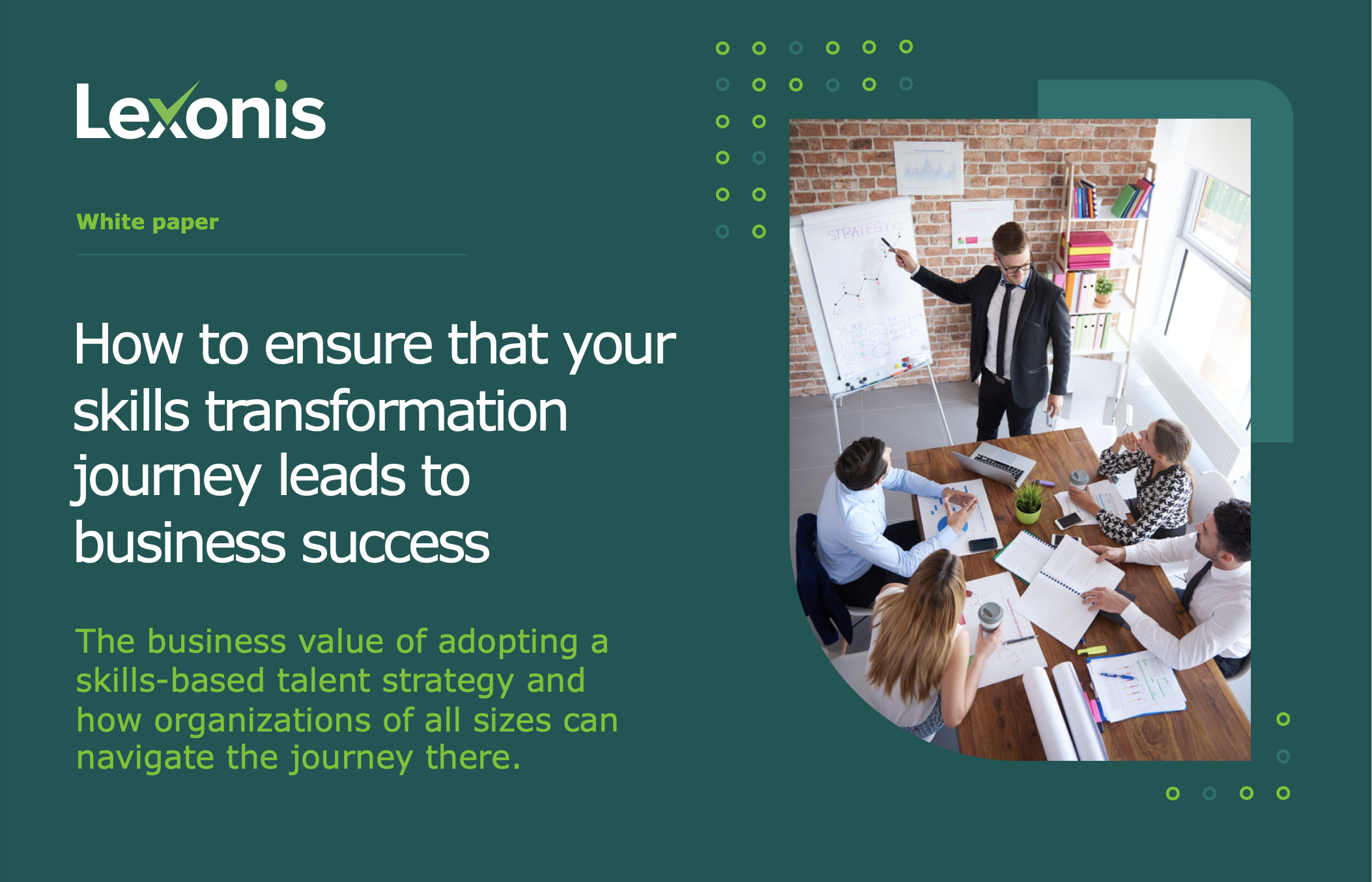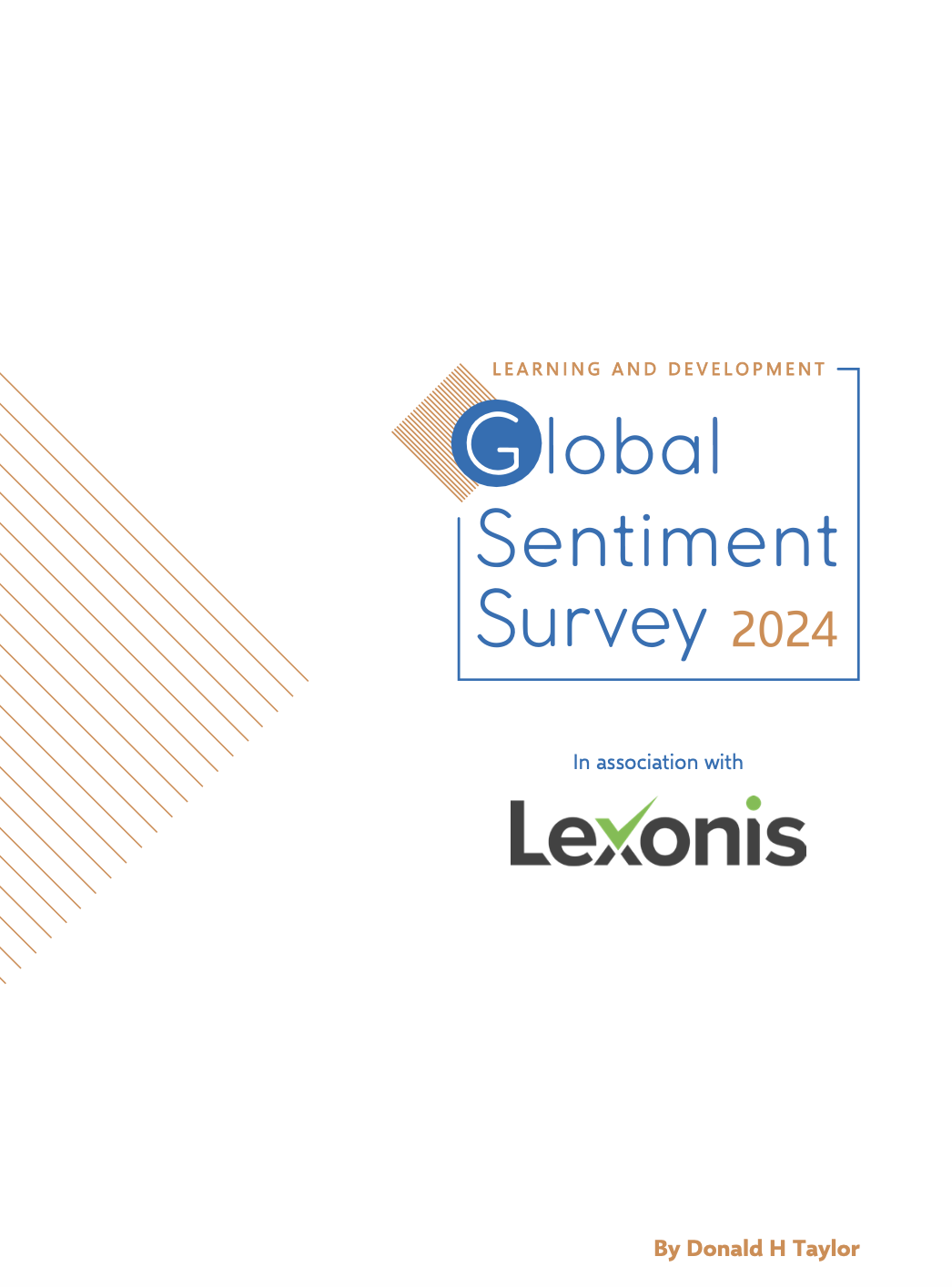AI and Skills: Forget the Hype, Find the Business Benefits
Andy Andrews
Introduction
According to the Global Learning and Development (L&D) Sentiment Survey 2024, Artificial Intelligence (AI) topped the list (and by some margin) in answer to the question ‘What will be hot in workplace learning in 2024?’ With ‘Reskilling/Upskilling’ and ‘Skills-based Talent Management’ making up the next two places with a total of almost 20%, there is a substantial amount of interest in support for the skills-based organization.
Unsurprisingly then, AI has become a ubiquitous term in discussions surrounding skills and talent management. It promises a revolution in the way we assess, develop, and manage skills within organizations. However, for organizations aspiring to be on the skills-first journey, it’s essential to separate the hype from tangible business benefits.

The Skills-based Challenge
In a survey by Deloitte Touche Tohmatsu, when asked the question ‘What are the top three barriers you observe in transforming into a skills-based organization?’, 26% of the respondents cited a ‘lack of a common definition or taxonomy of skills.’ Certainly, it has been our experience at Lexonis that the challenge of sourcing and maintaining a skills taxonomy has waylaid many a skills-based initiative. Defining skills, developing skill-based job profiles and structuring skill taxonomies are challenges for which generative AI has proved to be a game-changer.
There has been an understandable tendency by organizations (and technology vendors) to bypass the overhead of building and maintaining skills taxonomies by using simplified versions of the same, for instance, the use of ‘skills clouds’. This often consists of a list of many thousands of words, each one representing a skill by name, but without any description, no levels of proficiency, or evidence indicators signposting the degree of proficiency. AI is often used by technology vendors to generate a proliferation of words representing skills and to associate them using ontologies. While such an approach may sound appealing and appears to provide a convenient shortcut, it will likely not help the organization to fully realize the benefits of skills-based Talent Management.
For example, how do you address personal learning and development opportunities without identifying an individual’s skill gaps? How do you measure skill gaps without defining skills with proficiency levels in the first place? How do you build career pathways without clearly articulating what it means to increase a person’s mastery of the same skill by defining different proficiency levels – from ‘basic understanding’ to ‘expert’? What a disaster it may turn out to be if you were to name a skill in a job posting but not articulate what level of expertise was required – for either the benefit of the candidate or the recruiter and interviewer.
The Business Benefits
The following isn’t exhaustive, but implementing skills when they are properly defined, helps organizations to:
- Develop and maintain the skills the organization needs to meet business strategy
- Optimize job performance through targeted learning and development opportunities
- Improve hiring and recruitment processes by clearly specifying ‘what good looks like’
- Retain and attract the best talent by providing visibility for career development
- Increase project success rates by assigning the right people, to the right project
- Implementing a successful transformation program by leveraging existing talent
Using AI to Define Jobs and Skills
The fact is that with AI an organization no longer has to compromise on the completeness and quality of a skill taxonomy or skills-based job profiles! At Lexonis, we’ve harnessed the power of generative AI to quickly create comprehensive skill-based job profiles, ensuring that they are consistent, up-to-date and current. By leveraging generative AI technology, we’ve streamlined the process of developing skill definitions and organizing them into structured taxonomies, providing a clear framework for assessing and managing skills within the organization.
The Role of the ‘Human-in-the-loop’ Process
However, while AI-driven approaches offer promise, they’re not without their challenges. One critical factor is the need for human validation and input throughout the process. While generative AI can expedite the development of job profiles and skill taxonomies, human expertise is essential for ensuring accuracy, relevance, and alignment with organizational goals and culture. Additionally, employee engagement and buy-in are crucial for the successful implementation and adoption of AI-driven solutions.
Conclusion
At Lexonis, we understand the importance of striking the right balance between AI-driven automation and human expertise. Our approach combines the efficiency of generative AI with the insight of subject matter experts – those who work within the client’s organization. Each organization is unique, this has to be reflected in the skills and jobs within the organization. Utilizing tools that enable human-in-the-loop insights into the skill and job-defining process results in solutions that are comprehensive and tailored for the organization.
Our aim at Lexonis is to dispel the myths surrounding AI and to provide pragmatic solutions for leveraging AI to expedite skill-based initiatives, ensure the currency of skill profiles, and engage stakeholders effectively. By harnessing the power of generative AI alongside traditional methods, organizations can unlock new opportunities for skill development and talent management.
The reality of AI in skills is here, it is already being utilized by many Lexonis’ clients!
Beyond the hype, if you would like to find out more about how AI is being used to realize business benefits, come and see us at Stand DD35 HR Technologies Exhibition at London ExCel on 17th and 18th April 2024.
Also, attend our free seminar entitled ‘The AI Advantage: Real World Benefits for Skill-based Organizations’ at 12:00 pm on the 18th of April 2024, at HR Tech Seminar Theatre 2.
You may also like

There is a skills gap problem in the developed economies…

The business value of adopting a skills-based talent strategy and…

What is trending in workplace L&D this year? Are your…